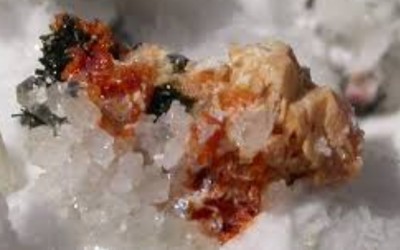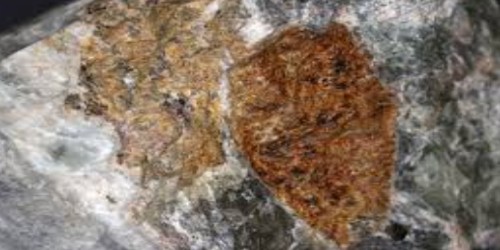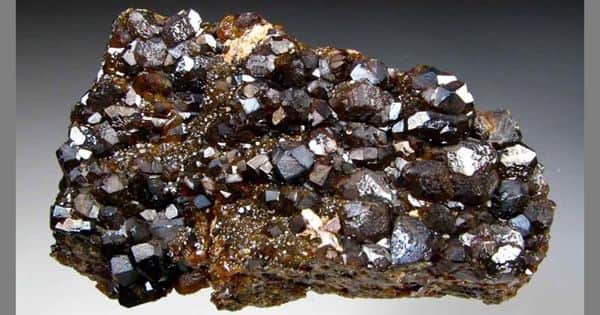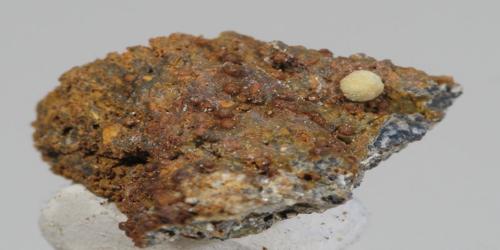Johnsenite-(Ce) is a very rare mineral of the eudialyte group, with formula Na12(Ce,La,Sr,Ca,[])3Ca6Mn3Zr3WSi(Si9O27)2(Si3O9)2(CO3)O(OH,Cl)2. It is a mineral containing calcium, chlorine, hydrogen, iron, oxygen, silicon, sodium, strontium, tungsten, and zirconium. The original formula was extended to show the presence of both the cyclic silicate groups and silicon at the M4 site, according to the nomenclature of the eudialyte group. In fact, some niobium substitutes for tungsten in johnsenite-(Ce).
General Information
- Category: Cyclosilicate
- Formula: Na12(Ce,La,Sr,Ca,[])3Ca6Mn3Zr3WSi(Si9O27)2(Si3O9)2(CO3)O(OH,Cl)2
- Crystal system: Trigonal
- Crystal class: Hexagonal scalenohedral (3m)

Properties
It is the third eudialyte-group mineral with essential tungsten, and second with essential rare earth elements (after zirsilite-(Ce), which is the niobium-analogue of johnsenite-(Ce)). Another characteristic feature is the presence of essential carbonate group, shared with carbokentbrooksite, golyshevite, mogovidite and zirsilite-(Ce).
- Color: Pale yellow to bright orange
- Crystal habit: skeletal crystals (etched); aggregates
- Fracture: Uneven
- Tenacity: Brittle
- Mohs scale hardness: 5-6
- Luster: Vitreous
- Streak: White
- Diaphaneity: Transparent or Translucent
- Density: 3.24 (measured)
- Optical properties: Uniaxial (-)
Occurrence and association
Johnsenite-(Ce) was discovered in alkaline rocks of Mont Saint-Hilaire, Quebec, Canada, which is also a type locality for other eudialyte group species: oneillite, khomyakovite, and manganokhomyakovite.
The association of johnsenite-(Ce) is rich, as it includes aegirine, albite, amphibole-group mineral, burbankite-group mineral, calcite, catapleiite, cerite-(Ce), dawsonite, epididymite, fluorapophyllite, Galena, microcline, molybdenite, natrolite, pectolite, pyrite, pyrrhotite, quartz, rhodochrosite, sphalerite, steacyite, Stillwellite-(Ce), titanite, tuperssuatsiaite, zakharovite and zirsilite-(Ce).
Information Source;
















